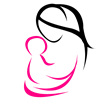When I was a teenager, there was a bookstore in the strip mall that housed our local Safeway store. When my mom and I would go grocery shopping, I frequently tried to talk her into letting me just go hang out at the bookstore while she shopped. Sometimes I got my way, and sometimes I didn’t.
I got my way often enough that I got to know the manager of the store. We would talk about books, and he didn’t mind if I hung out for a while without buying anything. At that time in my life, it was my dream to have a book published. Forty years later, that dream is still very much alive.
But in the early 1980s when I was young and very impressionable, I decided to ask my new friend to take a look at some poetry I’d written and let me know if it was good enough to be published. These were great sonnets that began with lines like, “She stood on the shore of the mist-shrouded land…” (Insert barf emoji here). My poems were awful. But when I was fifteen or sixteen looking for a little encouragement from someone who I admired, that’s not what I wanted to hear. Of course, that’s what he told me.
“They’re not good enough to be published.” His exact words.
You don’t say that to a kid! Honestly, you shouldn’t say that to anyone. Looking back, I realize that this guy was probably in his twenties and had no idea how to help a gawky kid on her path to publishing fame and fortune.
My biggest takeaway from that time in my life is how much the publishing industry has changed. Back in the day (the 1980s) there was only one way to have a book published – find an agent and hope they’re able to sell your book to one of the large publishers for a boatload of money.

Today there are so many options that it’s very difficult for a new author to know the best route to take. Let’s clear that up a bit and define the various ways to publish your book.
- Traditional Large Publisher – This option is still out there. If you really feel that you and your book have what it takes to attract one of the large publishing houses, then you should definitely go for it. You will need an agent – these companies do not accept unsolicited manuscripts. The author doesn’t pay upfront for any services, such as editing, cover design, or formatting. However, you’ll definitely need a platform with thousands of followers. You, the author, will be responsible for the vast majority of marketing efforts. Don’t expect the publisher to do much in that regard. One thing that a Traditional Large Publisher will usually provide is an advance check paid to the author. The publisher is responsible for uploading the book files to the various distributors (Amazon, IngramSpark, etc.) and they control distribution.
- Self-Publishing – There used to be a pretty big stigma attached to the term “self-publishing.” Books that were self-published were typically poorly edited, formatted, and the cover screamed DIY. (I can say this, because I’ve been there.) But now, there is so much educational information available for authors who do choose the self-publishing route, that it is possible to create a very professional product that rivals the books sold by the big guys. One thing, though – DIY doesn’t exactly mean “do it all by yourself.” There are many professionals who know exactly what they’re doing when it comes to cover design, editing, formatting for print and e-book; not to mention marketing and book publicity professionals. They’re not cheap, nor should they be. These experts provide valuable services that a self-published author should be very happy to use. The author is responsible for uploading the files to distributors and managing distribution.
- Hybrid Publisher – Hybrid Publishers are kind of cross between the traditional model and self-publishing. This publisher offers you the wisdom of their experience and expertise, while charging you for certain services. They may or may not control distribution.
- Traditional Small Publisher – There are some small publishing companies (like mine, Motina Books) who operate as a traditional publisher. This means that the author does not pay for any services upfront, and we share the royalties when the book sells. I like collaborating with my authors; I feel strongly that we are partners and should work together as a team.
So, how do you choose the publisher that’s right for you? Like anything else, you’ll need to look into the many different options that are available. Talk to other authors about the publishing route they’ve taken. Interview multiple publishers, and make sure you feel comfortable with the one you choose.
“Wait a minute,” you may ask. “Don’t they choose me?”

It’s a partnership. Many publishers will do a bit of vetting when it comes to selecting authors, but the choice is not one-sided. Make sure you feel comfortable working with the company who will bring your labor of love into the world.
